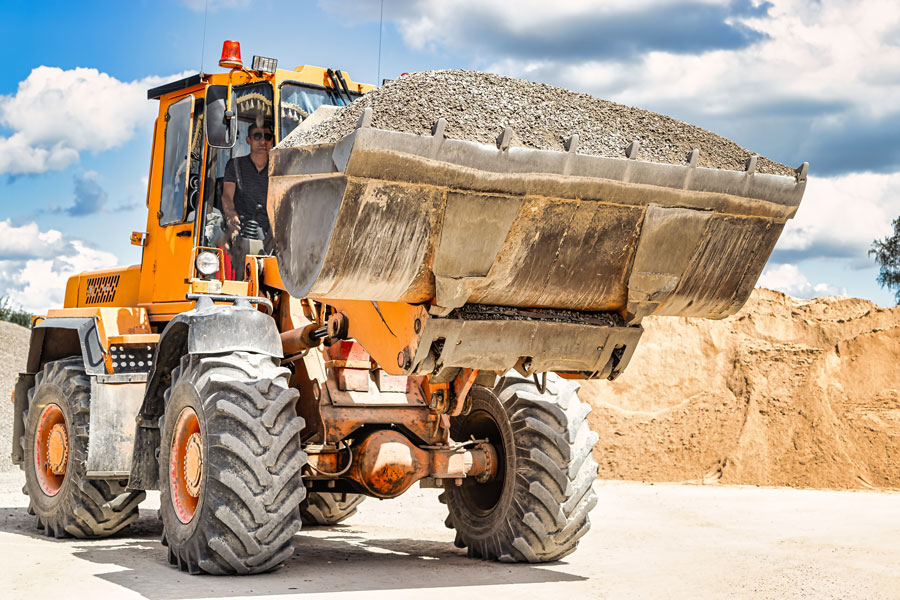
SAT 8:00AM to 12:00PM Credit ApplicationKeep in Touch


At Pro Star Rental, we carry both backhoe loaders and wheel loaders. These machines are invaluable to companies that perform a lot of lifting and hauling of materials in their work. And while they do share some similarities, they are different, and their ideal usage is different. If you are not sure which one would best suit your job, hopefully this breakdown of their differences will remedy that.
A backhoe loader is a machine used for construction and heavy lifting. They're typically fitted with a bucket on the front and an arm to lift things, whereas wheel loaders are designed to push objects around.
The wheel loader is designed to transfer materials from one place to another using the power of its wheels and usually has an extended fork. They are used mainly in warehouses and can work alongside other machines, such as conveyor belts or cranes.
Although there are many similarities, there are several differences between the two machines. Here are eight facts about backhoe loaders and wheel loaders that you might not have known:
The front of the machine is usually fitted with a large bucket and handles to lift objects. The bucket is attached to the arm on the back of the device using a mechanical linkage system. This ensures that when it moves forward, it also lifts. The mechanical linkage is typically controlled by two cables attached to one lever at the front. The backhoe loader is powered by a combustion engine and is generally fitted with tracks.
The wheel loader has many uses and can be used indoors in warehouses or on construction sites.
Both machines had issues with safety features in the past, but that's no longer the case. These days, both types are fully enclosed and have pedals that activate an emergency braking system which could save lives.
The backhoe loader is wider and weighs more than a wheel loader, so it doesn't fit into the tight spaces that the latter can.
The backhoe loader has a high acceleration rate, whereas the wheel loader has a smaller footprint and low power output. The front bucket of the machine is also more significant than the wheel loader's and can carry up to 5 cubic yards of material at a time.
If you are looking for a more powerful tool, a backhoe loader is your best bet. However, if you're mainly interested in maneuverability, the wheel loader is right for you.
Backhoe loaders are still mainly used for construction and heavy lifting jobs, whereas wheel loaders are primarily used for moving things around warehouses or construction sites.
By Pro Star Rental 12-12-2022
Step 1 - PRE-INSPECTION The Pro Star Rental Staff will perform a safety check to make sure the equipment is ready to use prior to rent. Here are some of the items they are checking for; Perform a pre-inspection of the machine. Walk around the machine, and inspect for excessive wear, loose parts, leaks, cracks, or other damage. Check the engine compartment for excessive wear, loose parts, leaks, and fluid levels. Check the cab and other areas for excessive wear, damage, proper function, and cleanliness.
Step 2 - MACHINE START-UP
Step 3 - MACHINE WARM-UP
Step 4 - MACHINE ACTIVITY
Step 5 - MACHINE SHUTDOWN
Step 6 - MACHINE POST INSPECTION Conduct a post inspection. Walk around the machine, and inspect for excessive wear, loose parts, leaks, cracks, or other damage. Check the engine compartment for excessive wear, loose parts, leaks, and fluid levels. Check the cab and other areas for excessive wear, damage, proper function, and cleanliness. Follow the established guidelines for reporting any problems found and ensuring that problems are remedied.
Here are a few things to consider when renting a Backhoe or Loader.
By Pro Star Rental 12-12-2022
Recent:
Categories
Archive
Jun 2025
May 2025
Apr 2025
Jan 2025
Dec 2024
Nov 2024
Oct 2024
Sep 2024
Aug 2024
Jul 2024
Jun 2024
May 2024
Apr 2024
Mar 2024
Feb 2024
Jan 2024
Dec 2023
Nov 2023
Oct 2023
Sep 2023
Aug 2023
Jul 2023
Jun 2023
Mar 2023
Feb 2023
Jan 2023
Dec 2022
Nov 2022
Oct 2022
Sep 2022
Jul 2022
Jun 2022
Apr 2022
Mar 2022
Feb 2022
Jan 2022
Dec 2021
Oct 2021
Sep 2021
Aug 2021
Jul 2021
Jun 2021
May 2021
Apr 2021
Mar 2021
Feb 2021
Jan 2021
Dec 2020
Nov 2020
Oct 2020
Sep 2020
Aug 2020
Jul 2020
Jun 2020
May 2020
Apr 2020
Mar 2020
Feb 2020
Jan 2020
Dec 2019
Oct 2019
Aug 2019
Jun 2019
Apr 2019
Mar 2019
Feb 2019
Dec 2018
Apr 2018
Nov 2017
May 2016

Enter your information below to begin receiving emails from Pro Star Rental